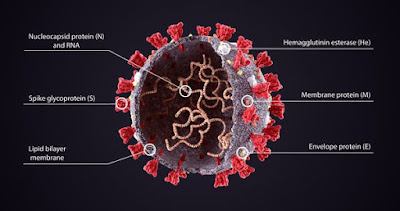Receptor-binding domain
If there is one coronavirus mutation that maintains researchers awake at evening, it is E484K. The mutation was discovered in both the Southern African variation (B1351) and the Brazilian variation (P1), however not in the UK variation (B117). This supposed "leave mutation" increased worries that the authorized COVID vaccines might not be as efficient versus these variations. The E484K mutation has currently been discovered in the UK variation also - albeit in simply 11 situations.
The coronavirus mutates gradually, building up about 2 single-letter mutations monthly in its genome. This price of alter has to do with fifty percent that of influenza infections. Very early in the pandemic, couple of researchers were concerned that the coronavirus would certainly mutate right into something much a lot extra harmful. However in November 2020, that quickly altered when the initially "variation of issue" was found. The recently found variation B117 was connected with the big surge in situations in south-east England and London.
While all mutations discovered in arising variations of coronavirus ought to be kept track of, researchers are especially thinking about mutations happening in the virus's surge healthy protein, particularly the receptor-binding domain name (RBD) area of the surge healthy protein. This area of the infection locks into our cells and starts infection. Mutations in the RBD could assistance the infection bind much a lot extra firmly to our cells, production it much a lot extra contagious.
The resistance we establish to the coronavirus, complying with inoculation or infection, is mostly because of the advancement of antibodies that bind to the RBD. Mutations in this area could permit the infection to evade or partly evade these antibodies. This is the factor they are called "leave mutations". E484K is one such mutation.
The mutation call originates from the setting in the string of RNA (the virus's hereditary code) that it happens (484). The letter E describes the amino acid that was initially at this place (glutamic acid). And K describes the amino acid that's currently because place (lysine).
A number of research researches have revealed that mutation E484K quits antibodies that target this setting from binding to it. Nevertheless, after an infection or inoculation, we do not create antibodies targeting just one location of the infection. We create a mix of antibodies, each targeting various locations of the infection. Exactly just how harmful it's to shed the impact of antibodies targeting this particular area will depend upon exactly just how a lot our body immune system depends on antibodies targeting this specific website.
2 research researches, one in Seattle, the various other in Brand-new York, examined this. In the Seattle examine, which is a preprint (implying it's yet to be peer reviewed), researchers analyzed the capcapacity of antibodies from 8 individuals that had recuperated from COVID to quit the mutated develop of the infection contaminating cells - in various other words, to neutralise the infection. prediksi singapore polls 8 july 2020
In examples from 3 of individuals, the capcapacity of the antibodies to neutralise the infection was decreased by as much as 90% when provided with the E484K mutated develop. And it was decreased in examples from a single person when provided with a various mutation at the exact very same setting. Nevertheless, the neutralisation capcapacity of examples from 4 of individuals was untouched by the mutation.
In the Brand-new York examine, researchers analyzed the impact of a variety of mutations on the capcapacity of antibodies, gathered from 4 individuals, to neutralise the infection. The scientists discovered that none of the antibodies were afflicted by the E484K mutation. Yet 2 of the examples saw a decrease in neutralisation capcapacity when tested with mutations happening at various settings in the surge healthy protein. This highlights the originality of the antibody reaction created by various individuals.



